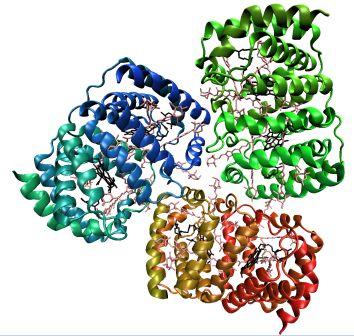Theoretical Chemistry Purdue
Slipchenko Group
Exciton interactions and energy transfer
We investigate excitation energy transfer and photo-protection in the photosynthetic apparatus of plants. Understanding light-harvesting processes on the molecular level is a prerequisite for engineering photovoltaic devices and solar cells. Moreover, the underlying physical and chemical processes of energy transfer and dissipation are of a fundamental importance. Theoretical description of energy transfer in photosystems requires two components, that is:
- The ability to accurately describe the electronic structure of photosynthetic pigments, chlorophylls and carotenoids; and
- The ability to model electronic and vibronic couplings that enable efficient energy transfer between the pigments.
The excited-state QM/EFP and FMO methods address the former. To target the second aspect, we develop vibronic models of the Fulton-Gouterman type. Our vibronic model can treat multiple inter- and intra-monomer vibrational modes in asymmetric bi-chromophore and multi-chromophore systems.

Efficiency and rates of energy transfer in photosystems, such as in this peridinin-chlorophyll-protein light-harvesting complex in dinoflagellates, are controlled by the protein environment. Geometries and relative orientations of chromophores, chlorophylls and carotenoids, are determined by the shapes of protein cavities, whereas the character of electronically excited states of the chromophores is affected by non-uniform electric fields due to the protein. Details of the environment effects on the energy transfer and photoprotection in photosynthetic systems are not yet fully elucidated, as explicit inclusion of the protein in computational models is challenging. Consequently, the efficiency of artificial photosynthetic devices and solar cells is still far behind the efficiencies of natural photosystems, and the construction of modern photovoltaic devices is often done through trial and error.
Vibronic interactions in diphenylmethane
Vibronic interactions in asymmetric diphenylmethane-d5: theory
Vibronic interactions in asymmetric diphenylmethane-d5: experiment